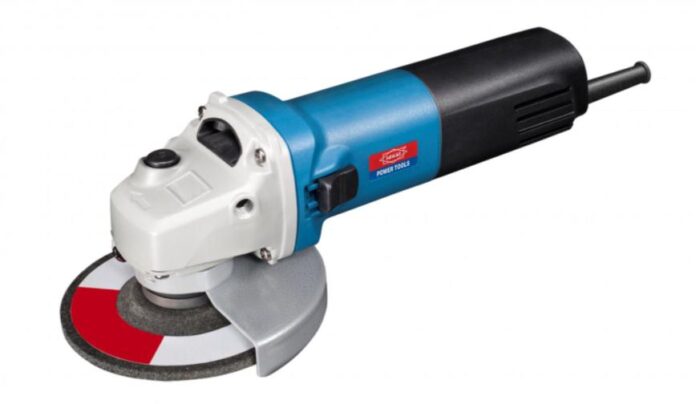The Fundamental Role of Grinders in Modern Engineering
In the realm of engineering, precision is paramount, and no tool embodies this principle more than the grinder. These versatile machines have revolutionized manufacturing processes across industries, enabling engineers to achieve unprecedented levels of accuracy and surface finish. From aerospace components to automotive parts, grinders play a crucial role in shaping the world around us.
As technology advances, the demand for high-quality, precision-engineered products continues to grow, driving manufacturers to seek out the best price wholesale grinders to meet their production needs. This article delves into the intricate world of grinding, exploring its applications, types, and the impact it has on engineering and manufacturing.
The Evolution of Grinding Technology
Grinding has come a long way since its inception, evolving from rudimentary abrasive wheels to sophisticated, computer-controlled machines. The history of grinding is intertwined with the development of industrialization, as engineers sought ever more precise methods of material removal and surface finishing. Early grinders were manually operated, requiring considerable skill and experience to achieve consistent results. As the Industrial Revolution progressed, mechanization brought about significant improvements in grinding capabilities, leading to increased productivity and accuracy.
The advent of numerical control (NC) and later computer numerical control (CNC) systems in the mid-20th century marked a turning point in grinding technology, enabling unprecedented levels of automation and precision. Today, state-of-the-art grinding machines incorporate advanced sensors, adaptive control systems, and sophisticated software to optimize performance and maintain tight tolerances even in high-volume production environments.
Types of Grinders and Their Specialized Applications
The world of grinding encompasses a wide array of specialized machines, each designed to tackle specific engineering challenges. Surface grinders, for instance, are indispensable in creating flat, smooth surfaces on metallic and non-metallic materials. These machines utilize a rotating abrasive wheel to remove material from the workpiece, achieving exceptional flatness and parallelism. Cylindrical grinders, on the other hand, excel in processing cylindrical parts such as shafts, pins, and bearings.
By rotating both the workpiece and the grinding wheel, these machines can produce extremely precise cylindrical forms with tight diameter tolerances. Centerless grinders take this concept further by eliminating the need for workpiece centering, making them ideal for high-volume production of small cylindrical components. Tool and cutter grinders play a vital role in maintaining the cutting edges of various machining tools, ensuring optimal performance and longevity. For complex geometries and contoured surfaces, profile grinders and creep-feed grinders offer specialized solutions, enabling the production of intricate parts for aerospace, automotive, and medical applications.
Advancements in Abrasive Materials and Wheel Design
The efficacy of any grinding operation is heavily dependent on the abrasive material and wheel design employed. Over the years, significant advancements have been made in this field, leading to improved grinding performance and expanded capabilities. Traditional abrasives such as aluminum oxide and silicon carbide have been supplemented by superabrasives like cubic boron nitride (CBN) and diamond. These materials offer exceptional hardness and thermal conductivity, allowing for higher material removal rates and improved surface finishes, particularly when working with difficult-to-machine materials like hardened steels and ceramics.
Wheel design has also undergone substantial evolution, with the introduction of engineered abrasives and optimized bond systems. Vitrified bonds, for instance, provide excellent wheel porosity and coolant flow, while resin bonds offer improved toughness and self-sharpening characteristics. The development of segmented and layered wheel structures has further enhanced grinding performance, allowing for better chip evacuation and reduced thermal damage to the workpiece.
Precision Control and Process Optimization in Modern Grinding
The pursuit of ever-tighter tolerances and higher productivity has led to significant advancements in grinding process control and optimization. Modern CNC grinding machines are equipped with an array of sensors and control systems that continuously monitor and adjust the grinding process in real-time. Acoustic emission sensors, for example, can detect the onset of wheel dulling or workpiece burn, allowing for timely wheel dressing or process adjustment. In-process gauging systems provide immediate feedback on workpiece dimensions, enabling automatic compensation for wheel wear and thermal expansion.
Advanced grinding software incorporates simulation and optimization algorithms to determine optimal grinding parameters, including wheel speed, workpiece speed, and infeed rate, based on material properties and desired surface finish. These intelligent systems not only improve part quality but also enhance process efficiency by minimizing cycle times and reducing scrap rates.
Furthermore, the integration of grinding machines into broader manufacturing execution systems (MES) and enterprise resource planning (ERP) platforms enables seamless data exchange and production planning, facilitating just-in-time manufacturing and continuous improvement initiatives.
Write and Win: Participate in Creative writing Contest & International Essay Contest and win fabulous prizes.

















